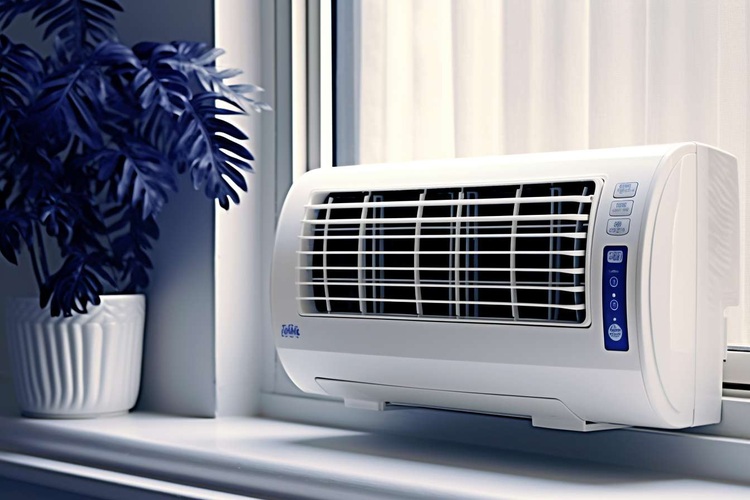Portable Air Conditioners: A Flexible Way to Cool Your Home
Portable air conditioners have become increasingly popular among Australian households seeking effective cooling solutions without permanent installation requirements. These versatile units offer climate control flexibility that traditional fixed systems cannot match, making them particularly valuable for renters, temporary spaces, and homes where ducted systems aren't practical. Unlike window units or split systems, portable air conditioners can be moved from room to room, providing targeted cooling exactly where and when it's needed most.

Understanding How Portable Air Conditioners Work
Portable air conditioning units operate using the same basic refrigeration principles as larger systems, but in a compact, mobile format. The unit draws warm air from the room through an intake, passes it over cold evaporator coils filled with refrigerant, then releases cooled air back into the space. Heat extracted from the room air is expelled outside through a flexible exhaust hose that connects to a window kit or wall vent.
Most portable units feature a single-hose or dual-hose configuration. Single-hose models use one exhaust tube to expel hot air, while dual-hose systems have separate intake and exhaust hoses for improved efficiency. The refrigeration cycle continues as the compressor circulates refrigerant between the evaporator and condenser coils, maintaining consistent cooling performance throughout operation.
Advantages and Possible Limitations of Portable AC Units
Portable air conditioners offer several distinct benefits for Australian homes. Their mobility allows users to cool specific rooms as needed, potentially reducing energy costs compared to whole-house systems. Installation requires minimal technical knowledge – simply position the unit, connect the exhaust hose, and plug into a standard power outlet. This makes them ideal for rental properties where permanent modifications aren’t permitted.
However, these units do have limitations worth considering. They typically cool smaller areas less efficiently than split systems of equivalent capacity. The exhaust hose connection can allow some outdoor air infiltration, reducing overall efficiency. Portable units also generate more noise than ducted systems since all components operate within the living space. Additionally, they require regular maintenance of water collection tanks and air filters to maintain optimal performance.
What to Know Before Choosing a Portable Air Conditioner
Several factors should guide your portable air conditioner selection process. Room size represents the most critical consideration – units are rated in British Thermal Units (BTUs), with larger spaces requiring higher BTU ratings. A general guideline suggests 20 BTUs per square foot for standard ceiling heights, though factors like insulation, window exposure, and local climate affect actual requirements.
Energy efficiency ratings, measured by the Energy Efficiency Ratio (EER), indicate operating costs over time. Higher EER ratings mean lower electricity consumption for equivalent cooling output. Consider features like programmable timers, multiple fan speeds, dehumidification functions, and remote controls based on your specific needs. Additionally, ensure your chosen unit’s power requirements match your electrical outlets and circuit capacity.
Could a Portable AC Be a Practical Option for Renters?
Portable air conditioners present particularly attractive solutions for rental properties across Australia. Since they require no permanent installation or structural modifications, renters can enjoy effective cooling without seeking landlord approval or risking lease violations. The ability to take the unit when moving adds significant value for transient living situations.
These units prove especially beneficial in older rental properties lacking modern cooling infrastructure. Many heritage buildings or budget rentals don’t include air conditioning, making portable units essential for summer comfort. The investment in a quality portable air conditioner often proves more economical than repeatedly paying for temporary cooling solutions or suffering through extreme heat periods.
| Model | Brand | Cooling Capacity | Key Features | Price Range (AUD) |
|---|---|---|---|---|
| PAC C120E | DeLonghi | 12,000 BTU | Dual-hose design, remote control | $800-$950 |
| WPAC-12000 | Omega Altise | 12,000 BTU | Single-hose, timer function | $600-$750 |
| CP14XJ1 | Honeywell | 14,000 BTU | 4-in-1 design, app control | $900-$1,100 |
| PAC-12K | Kelvinator | 12,000 BTU | Energy efficient, quiet operation | $700-$850 |
Prices, rates, or cost estimates mentioned in this article are based on the latest available information but may change over time. Independent research is advised before making financial decisions.
Comparison of Popular Portable AC Models
When comparing portable air conditioning models available in Australia, several standout options offer different advantages for various situations. DeLonghi’s dual-hose models typically provide superior efficiency compared to single-hose alternatives, though at higher upfront costs. Omega Altise units often represent good value for basic cooling needs without premium features.
Honeywell models frequently include smart connectivity options, allowing smartphone control and scheduling features that appeal to tech-savvy users. Kelvinator focuses on energy efficiency and quieter operation, making their units suitable for bedrooms or noise-sensitive environments. Consider warranty coverage, local service availability, and replacement part accessibility when making final selections, as these factors significantly impact long-term ownership satisfaction.
Portable air conditioners represent practical cooling solutions for many Australian households, particularly those requiring flexibility, temporary installation, or rental-friendly options. While they may not match the efficiency of permanent systems, their convenience and versatility make them valuable alternatives for targeted climate control. Careful consideration of room size, energy efficiency, and specific features ensures optimal selection for individual cooling needs and circumstances.




